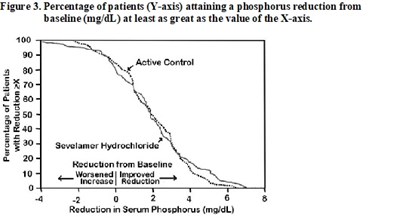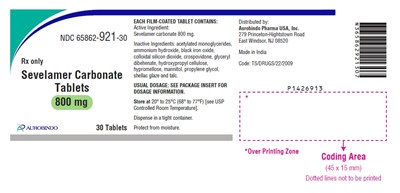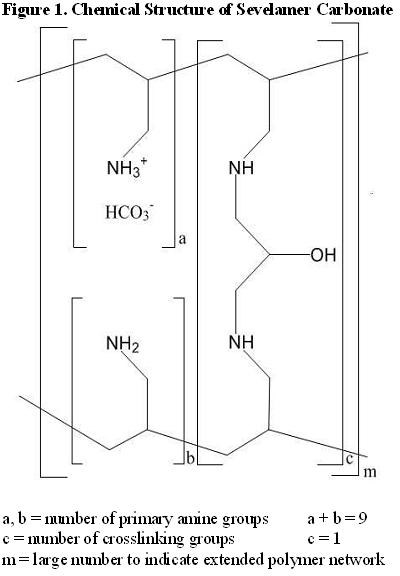Product Images Sevelamer Carbonate
View Photos of Packaging, Labels & Appearance
Product Label Images
The following 5 images provide visual information about the product associated with Sevelamer Carbonate NDC 65862-921 by Aurobindo Pharma Limited, such as packaging, labeling, and the appearance of the drug itself. This resource could be helpful for medical professionals, pharmacists, and patients seeking to verify medication information and ensure they have the correct product.
Figure 4 - sevelamer fig2

This is a figure (Figure 3) that shows the percentage of patients who achieved a reduction in their serum phosphorus level (represented on the X-axis) from their baseline (mg/dL) at least as great as the value of the Y-axis. The graph compares the results between an active group and a control group. The percentage of patients who improved or worsened in their phosphorous levels are also represented in the graph.*
sevelamer fig4

Sevelamer Carbonate Tablets by Aurobindo Pharma USA, Inc. contains Sevelamer carbonate 800 mg as an active ingredient. These tablets are available in a package of 30 tablets and are for Rx use only. Inactive ingredients such as acetylated monoglycerides, ammonium hydroxide, black iron oxide, colloidal silicon dioxide, crospovidone, glyceryl dibehenate, hydroxypropyl cellulose, hypromellose, mannitol, propylene glycol, shellac glaze, and tal are also included. The package insert contains usual dosage information. These tablets should be stored in a tight container between 20-25°C to protect them from moisture. The given code is TS/IDRUGS/22/2009, and the printed area is 45x15 mm.*
Chemical Structure - sevelamer str

This is a chemical structure diagram of Sevelamer Carbonate, a medication used to lower high levels of phosphorus in patients with chronic kidney disease. The diagram illustrates the molecular structure of the compound, including the number of primary amine groups (a and b) and the number of crosslinking groups (e=1) that contribute to its extended polymer network.*
* The product label images have been analyzed using a combination of traditional computing and machine learning techniques. It should be noted that the descriptions provided may not be entirely accurate as they are experimental in nature. Use the information in this page at your own discretion and risk.

